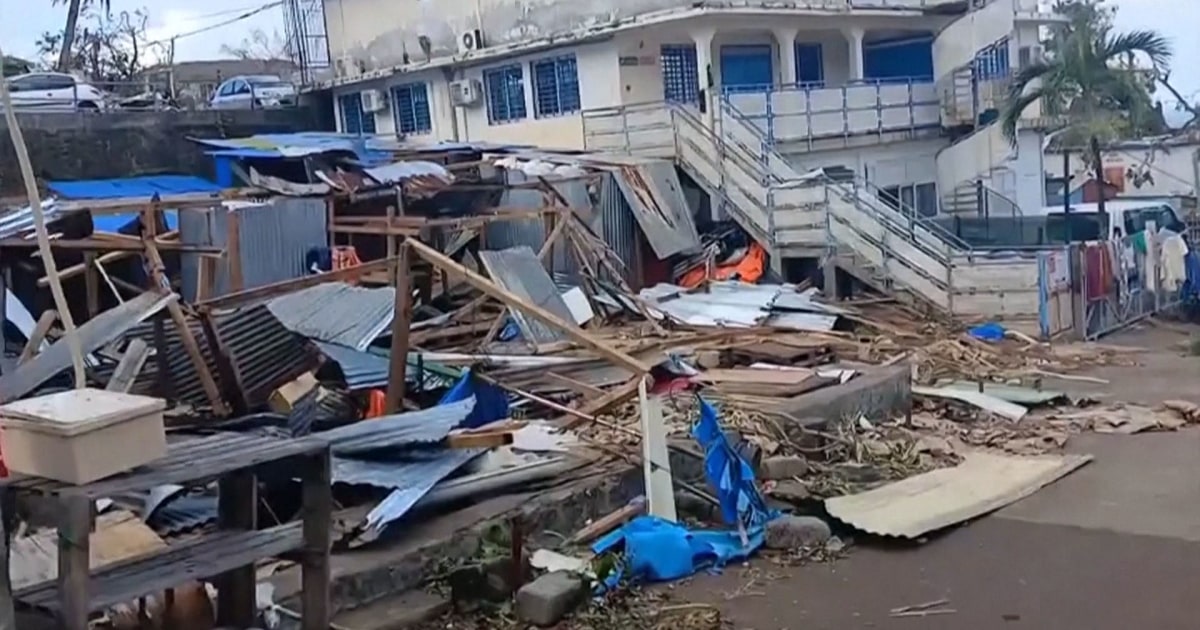Destruction and Resilience: The Impact of the Recent Cyclone on French Indian Ocean Islands
The recent cyclone that struck the French Indian Ocean islands has unleashed unprecedented devastation, prompting urgent humanitarian responses and raising critical questions about climate resilience and disaster preparedness in vulnerable regions. As communities reel from the disaster, the scale of destruction serves as a stark reminder of the increasing frequency and intensity of cyclonic events attributed to climate change.
The Cyclone’s Path of Destruction
The cyclone, identified as Cyclone X, made landfall in the early hours of Sunday, battering the islands with winds exceeding 150 km/h (93 mph) and torrential rainfall. Initial reports indicate that the cyclone caused widespread damage, including:
- Severe flooding in coastal areas, with water levels rising up to 3 meters in some regions.
- Structural damage to homes and infrastructure, with thousands of buildings either severely damaged or completely destroyed.
- Widespread power outages affecting entire communities, leaving residents without essential services.
- Disruption of communication networks, hindering rescue and recovery efforts.
In the aftermath, local authorities have reported at least 50 fatalities, with thousands more displaced. Emergency shelters have been set up, but the need for food, clean water, and medical supplies is urgent. The French government has mobilized resources and activated emergency protocols to assist those affected, while international aid organizations are coordinating relief efforts.
The Humanitarian Response
In response to the cyclone’s aftermath, several humanitarian organizations, including the Red Cross and UNICEF, have deployed teams to provide immediate assistance. Key components of the response include:
- Emergency Relief Supplies: Distribution of food, water, and hygiene kits to affected populations.
- Medical Assistance: Mobile clinics set up to treat injuries and prevent the outbreak of diseases, such as cholera, which can thrive in flooded conditions.
- Psycho-social Support: Counseling services offered to help individuals cope with trauma and loss.
Despite these efforts, challenges remain. The extent of the damage complicates logistics, and many remote areas are still cut off from aid. Moreover, the psychological toll on communities can hinder recovery long after the physical rebuilding is complete.
The Role of Climate Change
The destructive power of Cyclone X highlights a troubling trend: the increasing frequency and intensity of cyclones in the Indian Ocean region. According to the Intergovernmental Panel on Climate Change (IPCC), rising sea temperatures and changing weather patterns significantly contribute to the escalation of such extreme weather events.
Key factors include:
- Warmer Oceans: As ocean temperatures rise, the energy available for storm formation increases, leading to more powerful cyclones.
- Increased Rainfall: Warmer air holds more moisture, resulting in heavier rainfall during cyclonic events, exacerbating flooding risks.
- Sea Level Rise: Higher sea levels increase the vulnerability of coastal communities to storm surges and flooding.
Experts warn that without significant global efforts to mitigate climate change, the frequency of such catastrophic storms is likely to rise, placing additional strain on already vulnerable island communities.
Disaster Preparedness and Resilience
The devastation wrought by Cyclone X raises critical questions about disaster preparedness and resilience strategies in the French Indian Ocean islands. Historically, many small island nations have been underprepared for extreme weather events due to limited resources and inadequate infrastructure. Moving forward, it is essential to adopt a multi-faceted approach to enhance resilience, including:
- Improved Infrastructure: Investing in robust infrastructure designed to withstand extreme weather, such as elevated buildings and stormwater management systems.
- Community Engagement: Involving local communities in disaster planning ensures that strategies are tailored to the unique needs and vulnerabilities of each area.
- Education and Training: Providing training programs focused on disaster response and recovery can empower communities to act effectively during emergencies.
- International Collaboration: Strengthening partnerships with international organizations can provide crucial resources and expertise in disaster management.
Broader Implications for Climate Policy
The cyclone’s devastation extends beyond immediate humanitarian concerns, prompting a reevaluation of climate policies and disaster preparedness at both national and global levels. Policymakers must consider:
- Climate Adaptation Funding: Increased funding for climate adaptation initiatives is essential to help vulnerable regions prepare for future storms.
- Global Commitment to Emission Reductions: Addressing the root causes of climate change through international cooperation and commitment to reducing greenhouse gas emissions is critical.
- Investing in Renewable Energy: Transitioning to renewable energy sources can help mitigate the impacts of climate change and reduce reliance on fossil fuels.
As Cyclone X serves as a harsh reminder of the realities of climate change, it is imperative that governments, organizations, and communities come together to forge a path toward resilience and sustainability.
Conclusion
The catastrophic cyclone that struck the French Indian Ocean islands has left a profound impact on the affected communities, revealing both the immediate need for humanitarian assistance and the broader implications for climate resilience. As recovery efforts continue, it is crucial to learn from this disaster, reevaluate preparedness strategies, and take decisive action to mitigate the effects of climate change. Collaborative efforts at local, national, and international levels will be vital to build resilient communities that can withstand future climatic challenges. The time for action is now, as the realities of climate change increasingly threaten the livelihoods and safety of vulnerable populations worldwide.
See more Your Daily Weather



